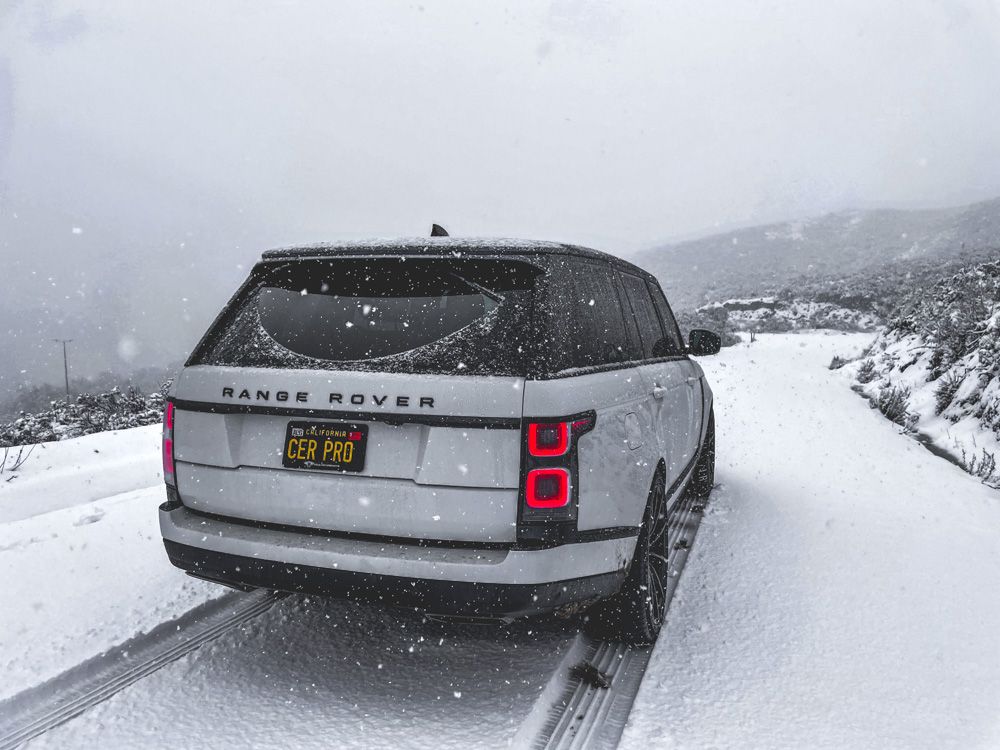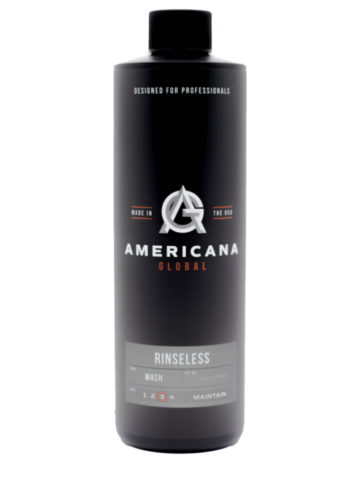Ceramic coatings for cars are an excellent choice if you’re looking for a way to protect your vehicle from the cold winter months. Whether you live in sunny San Diego or the fridged Northeastern United States, having a ceramic-coated vehicle offers many benefits for owners looking to keep their vehicles protected from the elements.
As technology has improved, ceramic coating for cars has evolved into arguably the most cost-effective way of protecting the factory finish of vehicles, industrial equipment, and boats from exposure to harsh winter weather conditions.
They provide superior protection against dirt and grime and give your ride a glossy, stylish finish that will last into the spring and beyond.
However, ceramic coatings for cars are not bulletproof. They’re not scratch-proof, and better products like paint protection film provide superior protection from road debris and scratches.
That said, PPF isn’t for everyone. And some vehicles simply are not in good enough condition to have a professional ceramic coat installed by professionals.
But, if you have a newer vehicle – and are looking to protect it from oxidation and corrosion and make winter living less stressful – investing in ceramic coatings simply makes sense.
Here are the top 5 benefits of using ceramic coatings for cars in the winter of 2023.
Benefit #1 – Keeps Your Car Cleaner in the Winter
A ceramic coating – by technical definition, is a thin layer of flexible glass that bonds to a surface to protect it from exposure to environmental damage. Some coatings (like you’re run-of-the-mill DIY spray coatings) sit on top of the surface and hold up for a few months.
Professional nano-ceramic coatings like Ceramic Pro 9H or ION fill those microscopic imperfections in all porous materials. This includes clear coats for paint, glass, metals, leather, textiles, and pretty much every material on a vehicle.
As these coatings cure, the surface area becomes exceptionally flat, making it extremely slippery.
The result is that natural substances – like dirt, snow, and even chemicals like magnesium chloride used as a de-icing agent on city roads are less likely to stick. This is known as displaying hydrophobic properties.
As you drive your vehicle down the highway, air blowing over your vehicle’s exterior will naturally remove many of these materials. This keeps your vehicle cleaner for more extended periods.
Benefit #2 – Ice Doesn’t Stick to the Surface
Another technical definition we need to explain is hydrophobic. The term itself means ‘being afraid of the water.’
But this is just the tip of the iceberg.
The truth is that hydrophobic properties describe a ceramic-coated surface’s attributes.
To explain this, let’s look at how automotive paint is applied.
Modern paint jobs include three layers.
- Primer on the raw metal or plastic.
- The color coat on top of the primer
- A clear coat on top of the color
Essentially, each layer is stacked and protects the layer underneath. However, all three paints are very thin and relatively easy to penetrate. But they also have microscopic imperfections.
As snow or water forms on an unprotected surface, tiny molecules of H2O can attach to those valleys. When the temperature is below freezing, ice crystals start to form on the top, then gradually move deeper into those imperfections.
Think of it this way – the ice crystals are forming roots on your unprotected exterior components on a vehicle.
A professional ceramic coating is tough and robust. It provides a thin yet durable layer of protection that is incredibly smooth and flat. These attributes make it impossible for ice to stick to the clear-coated and porous surface.
So – ice will form on top of the coated surface but won’t adhere to it as easily. This is especially true on automotive glass.
Benefit #3 – Reduces Salt and Road Grime Build-Up
By now, it should be clear how ceramic coatings on cars work. So, it makes sense to assume that annoying road grime and salt used on icy roads won’t bond to the vehicle surface.
However, if these materials won’t eventually stick to the coating would be irresponsible. That’s why many proactive vehicle owners have auto detailing experts complete maintenance washes at their facilities every few weeks.
Eventually, these types of substances will lightly bond to the coating. As smaller layers bond to the coating, more debris will stick to those contaminants. Eventually, the debris will grow, harden, and become more difficult to remove.
The key to mitigating this issue is to wash your vehicle every few weeks. We’ll explain what we recommend in the sections below.
Benefit #4 – Protection from Corrosion and Rust
Here is a pop quiz question for you. Do you know how rust is created?
Most of us assume that rust forms from bare metal getting wet – exposed to oxygen, and then eventually – turning that dirty brown/red color.
Technically, it’s more complex than that.
Rust is an oxidized form of iron, scientifically known as Fe2O3 xH20 or hydrated ferric oxide. This compound forms due to the corrosion process involving electrolytes for electron transfer and two electrodes (anode donating and cathode receiving). As oxygen reacts with metals in the presence of water molecules, rust is formed on their surface.
As we explained above, the modern car paint job is a multiple-stage process involving a base primer or sealant, the paint coatings (or the pigment), followed by the transparent coating (which produces the finish).
Suppose the car’s paint is scratched or damaged due to constant exposure to harmful elements. In that case, each layer of the vehicle’s paint job will begin to deteriorate. Once it reaches bare metal, the corrosion begins and eventually develops rust.
Pretty simple – huh?
To avoid this problem, most car owners opt for a professional-grade paint protection product to cover their vehicle’s exterior. Whether it be traditional waxing, sealant application, or ceramic coating solutions – creating a hard shell on the paint surface reduces scratches and oxidation that can eventually cause rusting.
But let’s break down the dollars and sense of applying these three solutions.
Traditional Car Wax
This product needs to be applied every month or two. You can use a traditional paste carnauba wax or a spray wax product. The cost of the raw materials is minimal. Still, it takes about an hour or longer for the average DIY enthusiast to complete the job.
However, cold temperatures, ice, snow, and exposure to harsh UV rays (often more substantial in the winter months than in summer) can quickly remove the wax. Also, car care wax does very little to provide resistance against abrasion, acid rain, bird droppings, or other sources of clear coat etching.
Plus, it’s complicated to apply car wax in cold weather climates.
Paint Sealants / Spray Ceramic Coatings
We’ll categorize these two products together – as they take about the same time, have a similar raw materials cost, and last about the same (six months at the most).
Again, your direct cost is about the same as natural car wax, but the time to apply and cure is longer.
The drawback is that these coatings are neither solid nor can degrade quickly during hostile weather conditions.
Nano Ceramic Coatings
This type of product, like Ceramic Pro 9H or Ceramic Pro’s latest invention, ION, is only installed by professional detailers or auto restyling professionals. They can cost several hundred dollars. However, they are much more robust, last much longer, and require basic car washes for maintenance.
Of all three protection products, professional-grade nano ceramic coatings give your vehicle the best protection against scratching the actual surface, exposing raw metal, starting corrosion, and, eventually, the formation of rust.
Plus, before installing a nanoceramic coating, professional car detailing experts will complete paint correction, which ensures the surface is free of scratches and other paint imperfections.
After installing pro coating package, they are backed by a warranty documented on the vehicle’s Carfax vehicle history report.
Benefit #5 – Easier to Perform Maintenance Washes in Garages
Ultimately, the best benefit of a professional ceramic coating is that it is easier to keep your vehicle clean. The biggest myth about coatings is that you’ll never have to rewash your car. This is 100% false.
We address this point in benefit #3 – that a coating will eventually develop layers of dirt, grime, and debris that will build up over time. Suppose you only wash the vehicle with a good hand car wash at least once per month – especially in winter. In that case, the coating’s hydrophobic properties will disappear.
Many individuals believe that it is unfeasible to detail cars in the winter, but this is only sometimes true. While traditional car soaps and hosepipes are impractical during cold weather conditions, advanced detailing products make keeping your vehicle clean a breeze – even with water restrictions.
If you’ve recently invested in a Ceramic Pro coating, PPF, or the new Ultimate Armor package, it’s crucial to find a creative way of washing light debris from your vehicle all year.
For those people searching for an eco-friendly and effective way of washing their cars, trucks, or SUVs in winter, Americana Global Rinseless Wash is the perfect solution.
This video shows you how easy it is to use the Americana Global Rinseless car wash system.
It’s recommended to wash your car every two or three weeks during the winter season. This will help you keep up with dirt and salt buildup.
If you live in a region where cold temperatures are frequent, investing in a rinseless wash solution can be a great way to remove light debris without scratching your vehicle’s paintwork.
Americana Global’s Rinseless Wash is a hybrid formulation that is highly concentrated, easy to use, and eco-friendly.
Instead of using traditional cleaners and degreasers found in most car soaps, it’s engineered to lift road grime, salt, and other contaminants from the coated surface, which makes it easy to clean – without aggressive scrubbing.
Further, you can wash your car in your garage with two buckets of water and no need for a high-pressure hose.
It’s a great idea to wash your vehicle every few weeks – especially during standard winter driving.
If you drove during a lot of snow or ice, and there was road salt on the highway, consider using a pressure washer or high-pressure hose to rinse your undercarriage when the weather conditions improve.
Otherwise, stick using the waterless wash method on the car’s paint we mentioned above.
Wrapping it Up
The article above shows that investing in a professional ceramic coating offers many benefits. Not only will it make it easier to remove ice and snow from your vehicle after a winter storm, but it’ll also reduce oxidation and corrosion and virtually eliminate the formation of rust.
If you want to protect your vehicle from exposure to harsh winter weather and want a FREE QUOTE on ceramic coatings, click the button below.







